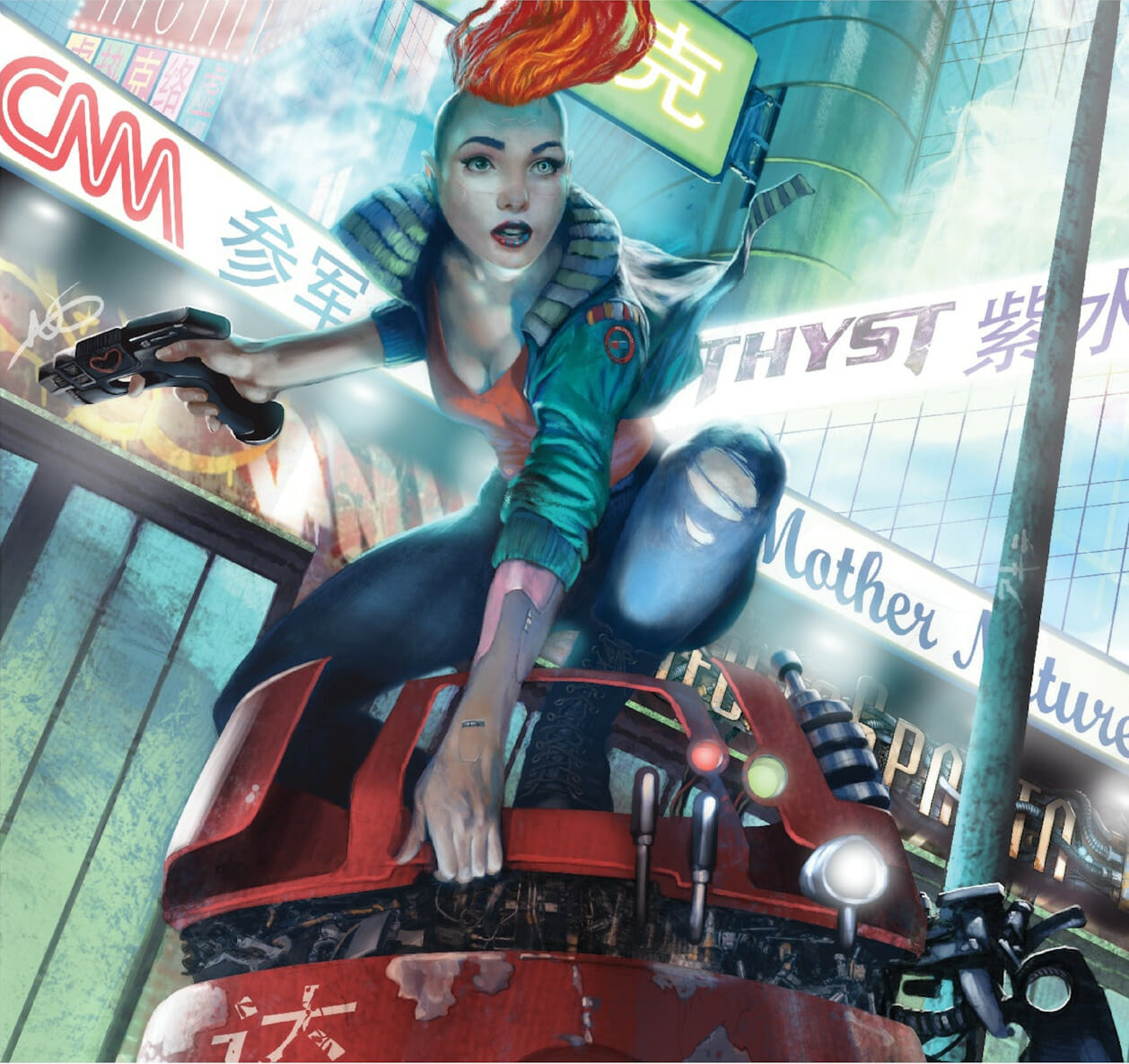Chris Dias owns Dias Ex Machina, the creator of Ultramodern5, the most successful non-fantasy book for 5th Edition D&D not published by WOTC. It is returning to crowdfunding on June 20th now, and you can get involved on BackerKit.

With the crowdfunding project coming up, I took the chance to prey on Dias Ex Machina’s need to be visible. Crowdfunding projects need crowds, and that’s one of the reasons, along with Chris’ generosity, why Geek Native patrons (or those who swiftly join) are getting $0.20 copies of Biohazard.
I also suggested that Chris could talk about something spicy in the RPG industry – like AI’s role in content creation.
I was impressed; brave Chris agreed! Currently, Dias Ex Machina has a ban on AI-generated art in their RPGs. Could that change?
Let’s delve into the realm of Artificial Intelligence (AI)
By Chris Dias
Since 2007, my company has employed many talented artists, including one who has left an indelible mark on most of my projects. I see myself as a visual artist who always had clear visual ideas for my creations. This goes back to my first setting, Amethyst.
When it was homebrew, I approached many artists to request permission to employ their art. They were shocked at having even been asked. All but one said yes. Intriguingly, many artists, initially stunned at being requested to incorporate their art into my campaign, later contributed to my legitimate operation.
In this process, I selected a few artists to come on board, with one significantly shaping the setting. Establishing this backdrop involved drawing inspiration from the initially inspired artworks to create unique ones. This practice persists, with many artists referencing others for inspiration. It extends beyond visual art as I’ve openly discussed the writers who have influenced me and whose style I strive to emulate.
Now, concerning AI-generated images it’s a multifaceted topic. I believe in respectful discourse, especially on subjects not purely black or white, such as this one. I won’t vilify artists who see a promising future in AI-generated images, as this technology might have prospective applications.
As an artist, publisher, and advocate for artists at fan conventions, I’ve decided to currently ban AI-generated images. My main concern is their potential to undercut genuine artists by selling art that no human hand has created.
However, I understand the complexities of copyright and trademark laws and their difficulty in keeping pace with advancing technology. AI systems can replace writers, musicians, and even human support staff, as I’ve personally experienced with Facebook’s transition to AI bots. This shift in the creative industry reminds me of the upheaval caused by digital music distribution in the late 20th century. But just as the advent of electronic music did not annihilate the music industry, AI will likely not spell the end of artistic creativity.

As for me, my team and I have been scrutinized for using word processors and grammar checkers. AI-assisted writing, while controversial, hasn’t triggered widespread outrage. From a publisher’s perspective, I see the allure of AI-generated images, especially for small operations with tight budgets. I won’t accuse them of depriving artists of income, rekindling the piracy debate that companies have long attempted to wage against users of platforms like Pirate Bay.
Given my financial stability as a well-established publisher, I can afford to pay for our work. The bottleneck for my last two projects wasn’t funding but time. Limiting the number of artists I work with also limits the number of images I acquire. While I won’t vilify those who use AI for creating images out of curiosity, I won’t criticize publishers, especially new ones, for utilizing AI to compensate for their financial constraints. And while some artists feel strongly about this issue, my close artist friends haven’t taken a hardline stance.
I respect genuine artists who use AI to enhance their productivity. If AI-assisted creations mirror what an artist would’ve made given enough time, I find it hard to rebuke them. I see no problem with artists submitting their original work into the system to see variations, and there seems to be a growing acceptance for AI trained solely on public domain images or personal work, facetiously termed “ethical AI.”

However, I do have reservations about using AI as the sole means of image creation and find it inappropriate to use specific artists’ names in AI prompts. I believe there’s room for AI in the creative process, akin to a tool like Photoshop. AI technology isn’t going anywhere. The internet itself stemmed from military applications, and no technology, with human cloning possibly being the current exception, has ever been wholly eradicated. Legal battles may arise, and some may succeed, but the idea of AI-generated images completely disappearing seems fanciful.
So, will Dias Ex Machina employ what I’ll call AI-assisted art? Likely, yes, but in collaboration with established artists, not as a substitute for them. Our budget for art and relationships within the field won’t be impacted unless others choose to make it an issue. I anticipate criticism for this stance, especially from those who judge without fully understanding the context. However, I encourage you to see the larger picture.
Quick Links
- BackerKit: Dias Ex Machina’s Ultramodern5.


